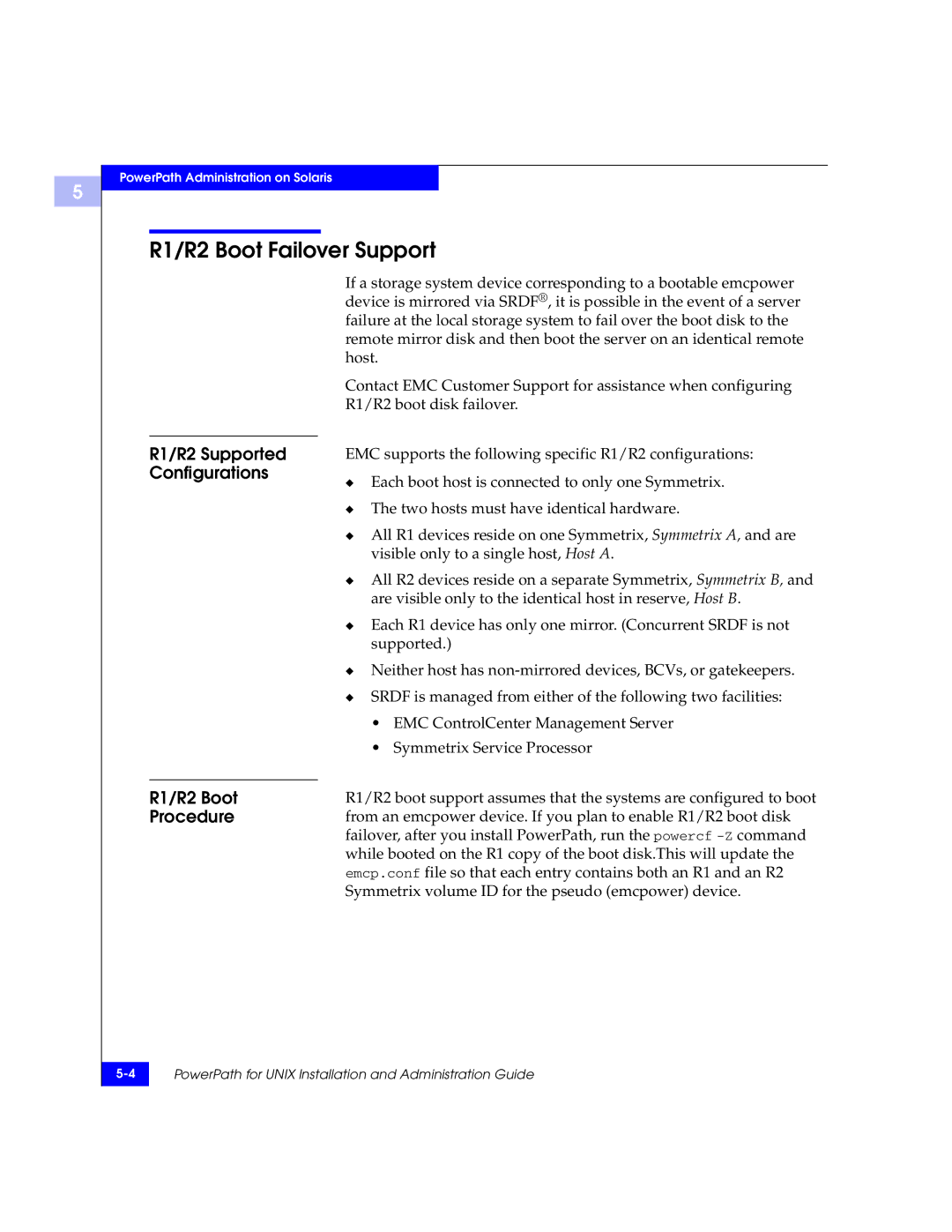
5
PowerPath Administration on Solaris
R1/R2 Boot Failover Support
R1/R2 Supported Configurations
R1/R2 Boot
Procedure
If a storage system device corresponding to a bootable emcpower device is mirrored via SRDF®, it is possible in the event of a server failure at the local storage system to fail over the boot disk to the remote mirror disk and then boot the server on an identical remote host.
Contact EMC Customer Support for assistance when configuring R1/R2 boot disk failover.
EMC supports the following specific R1/R2 configurations:
◆Each boot host is connected to only one Symmetrix.
◆The two hosts must have identical hardware.
◆All R1 devices reside on one Symmetrix, Symmetrix A, and are visible only to a single host, Host A.
◆All R2 devices reside on a separate Symmetrix, Symmetrix B, and are visible only to the identical host in reserve, Host B.
◆Each R1 device has only one mirror. (Concurrent SRDF is not supported.)
◆Neither host has
◆SRDF is managed from either of the following two facilities:
•EMC ControlCenter Management Server
•Symmetrix Service Processor
R1/R2 boot support assumes that the systems are configured to boot from an emcpower device. If you plan to enable R1/R2 boot disk failover, after you install PowerPath, run the powercf
PowerPath for UNIX Installation and Administration Guide | |
|
|
